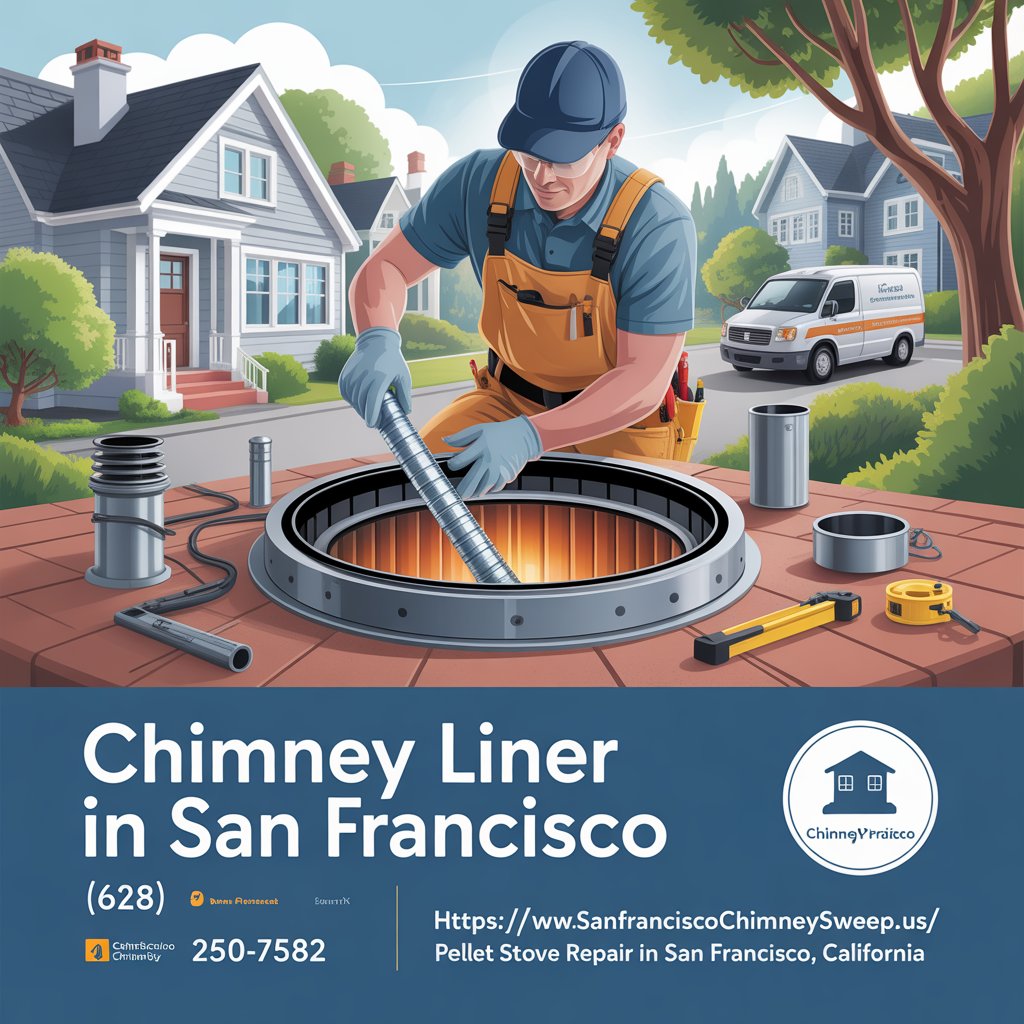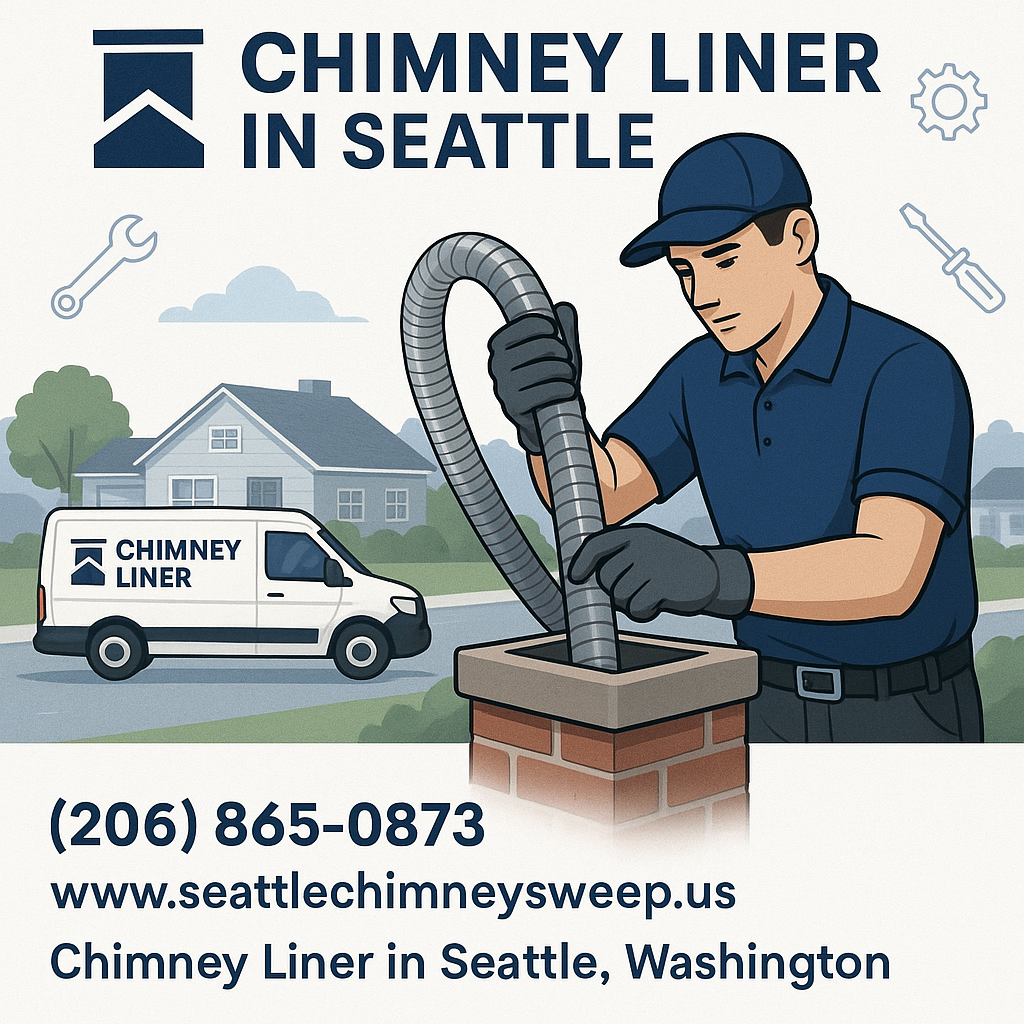Let’s talk about something that doesn’t usually come up at dinner parties: your chimney liner. Sounds boring, I know but bear with me. If you’ve got a fireplace or wood stove at home, this quiet piece of your chimney system is doing some heavy lifting behind the scenes. And when it’s damaged? Well, that’s when things can go from cozy to risky in no time.Many homeowners have no idea their chimney liner is cracked, corroded, or even missing entirely. Why? Because you can’t really see it it’s tucked away inside your chimney flue, out of sight and out of mind. But ignoring it can lead to all kinds of issues: from house fires to carbon monoxide leaks to crumbling brickwork. In cities with older housing stock and wetter winters, like San Francisco, the risks are even higher if you’re not keeping an eye on the condition of your chimney liner in San Francisco.
So, What’s a Chimney Liner and Why Should You Care?
Think of your chimney liner as the firewall between your fireplace and the rest of your house. It lines the inside of the flue (the vertical space smoke travels up) and acts as a buffer, guiding heat, smoke, and combustion gases out of your home safely.
It serves three main jobs:
- Protects your home’s structure from catching fire by containing the high heat inside the chimney.
- Carries toxic gases like carbon monoxide out of your house instead of letting them seep into the walls.
- Keeps the brickwork safe from moisture, acidic smoke, and soot damage.
No liner, or a damaged one, means those protections are gone. That’s why it’s so important to know the warning signs and take action if needed.
How to Spot the Danger Signs Early
You don’t need to be a chimney expert to notice when something feels “off.” Here are a few telltale signs your liner might be in trouble:
| Warning Sign | What It Might Mean |
| Strange smells (especially after rain) | Moisture mixing with creosote or soot inside chimney |
| Debris or tile bits in your fireplace | Clay liner could be cracked or deteriorating |
| Smoke in the room when using fireplace | Poor airflow—liner might be blocked or damaged |
| Chimney draft feels weak or reversed | Air isn’t flowing up properly, maybe due to liner gaps |
| Visible cracks in the masonry outside | Water damage, possibly caused by liner issues inside |
A chimney inspection from a certified pro can confirm the condition of your liner. Many companies now use tiny cameras to show you exactly what’s happening inside. It’s kind of cool (and scary) to see all that buildup and damage up close!
The Real Risks You Can’t Afford to Ignore
It’s tempting to shrug off a cracked liner or assume that the fireplace has “always worked fine.” But this is one of those home maintenance items that can turn dangerous fast if ignored.
Here’s what can happen if your liner is compromised:
- House fires: Heat escaping through cracks can ignite nearby wood framing.
- Carbon monoxide poisoning: Gases can leak into your living space undetected.
- Smoke damage: Your walls, furniture, and insulation can get coated in soot.
- Structural issues: Bricks and mortar deteriorate faster when exposed to moisture and acidic smoke.
In older homes especially, clay tile liners wear down over time, and some chimneys might not have had proper liners installed to begin with.
As one chimney sweep once told me,
“It’s not the chimney you see that causes the fire it’s the one you don’t.”
Repair or Replace? What to Do Next
Once you know your liner is damaged, the next question is: can it be repaired, or do you need a full replacement?
Here’s a simple way to look at it:
| Condition | Recommended Fix |
| Small cracks or minor damage | Resurfacing or inserting a stainless-steel liner |
| Missing sections or widespread gaps | Full liner replacement needed |
| Switching fuel types (wood to gas) | New liner required to handle different exhaust temps |
| No liner at all (older homes) | Install a new one—this is a must for safety |
The most common replacement today is a stainless steel liner. It’s durable, flexible, and works for both wood and gas appliances. Installation usually takes a day, and many come with lifetime warranties when installed by a certified professional.
Tips to Keep Your Chimney (and Liner) in Good Shape
Like most things around the house, a little routine care goes a long way when it comes to your chimney. Here are a few habits that can keep your liner in good shape longer:
- Burn only seasoned, dry wood – Wet wood causes more smoke and creosote buildup.
- Use a chimney cap – This helps keep rain, animals, and debris out.
- Schedule yearly chimney inspections – Especially before fireplace season kicks off.
- Avoid chemical logs or “quick cleans” – These don’t replace real, professional sweeping.
And if you’re getting your ducts cleaned or upgrading other air systems in your home, it’s smart to coordinate services. For example, if you’re booking Negative Pressure Air Duct Cleaning in Arlington, ask your service provider if they can inspect your chimney at the same time or recommend a chimney expert.
Final Thoughts: Protect What You Can’t See
Your chimney liner may be hidden, but its job couldn’t be more important. If it’s damaged, your fireplace becomes more than a source of warmth it becomes a potential hazard. The good
So whether your fireplace is the heart of your home in winter, or just an occasional luxury, keeping that liner in top shape is key to safety and peace of mind. And if you’re in an older home or you’ve never had your chimney inspected, now’s the perfect time to check in on your chimney liner in San Francisco.
Read More:Chimney Sweep


